For those of us living in small apartments or homes, the idea of having an indoor garden may seem like a far-fetched dream. However, with the right planning and creativity, you can create a thriving garden in even the tiniest of spaces.
So, in this article, we’ll explore some tips and tricks for creating a lovely indoor garden in our small spaces.
Table of Contents
1. Assess Your Space and Determine Your Goals
First and foremost, assess your available space and determine your gardening goals. Do you want a few statement plants to brighten up your living area, or are you looking to grow fresh herbs and vegetables for cooking?
Knowing your goals will help you choose the right plants and layout for your indoor garden.
2. Maximize Vertical Space
One of the easiest ways to make the most of limited space is by using vertical gardening techniques. Here are a few ideas you can use. While some of them are on the DIY side, others might need some financial investment:
a. Wall-mounted planters
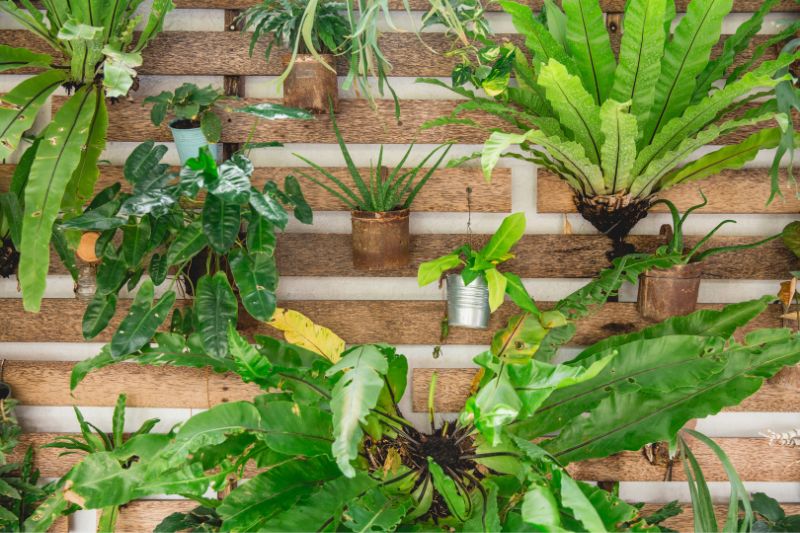
Attach planters to your walls to create a living piece of art that also saves floor space. You can use a variety of materials, such as wooden pallets, metal grids, or fabric pockets.
b. Hanging planters

Suspend planters from your ceiling, under shelves, or over windows to make use of unused vertical space. Macrame plant hangers are a trendy and attractive option for this purpose.
c. Shelving units
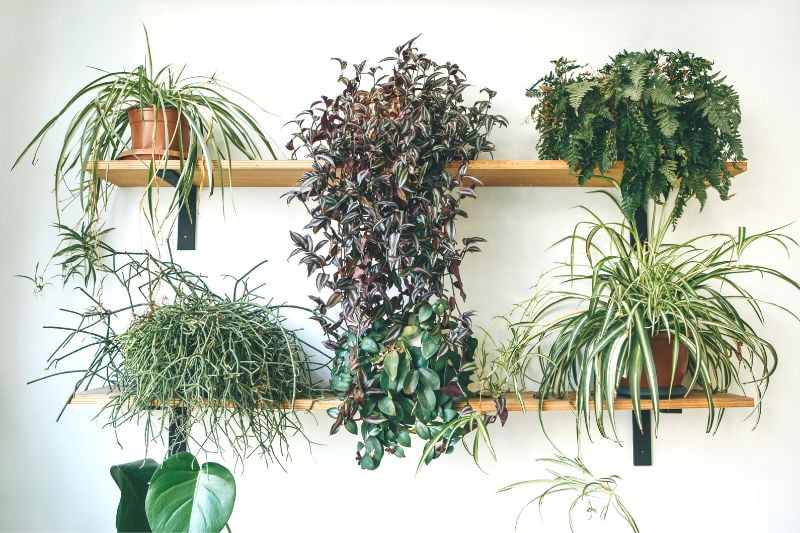
Use freestanding or wall-mounted shelves to create a tiered display for your plants. Ensure that each level receives adequate light and consider rotating plants periodically to ensure even growth.
d. Ladder plant stands
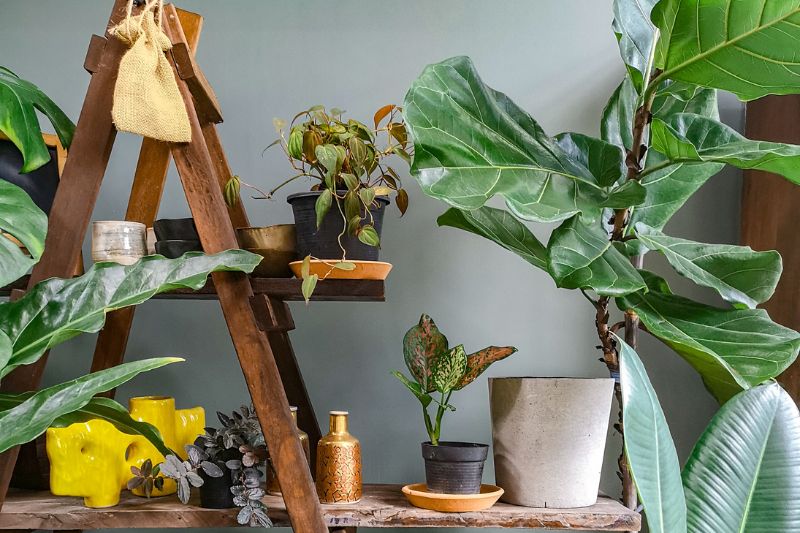
Repurpose an old ladder or invest in a ladder-style plant stand to display your plants vertically, maximizing floor space while adding visual interest.
e. Plant walls or living walls
Create a green wall by attaching plants to a vertical surface, such as a wall or a divider. This can be achieved using modular plant systems, felt pockets, or even DIY solutions like a trellis with potted plants.
f. Window shelves

Install narrow shelves directly on or in front of your windows to provide extra space for your plants without obstructing natural light.
g. Tension rod planters
Install tension rods in windows or between walls and hang small planters from them, creating an eye-catching display while utilizing vertical space.
h. Stacking planters
Choose stackable planters that allow you to grow multiple plants in a single vertical column. This is particularly useful for growing herbs or small flowering plants.
3. Choose the Right Plants
Selecting the right plants for your indoor garden is also important. Consider factors such as the amount of available light and the size of your space. After all, a Monstera might not be the best choice in this case. Some great options for small-space indoor gardening include:
a. Herbs
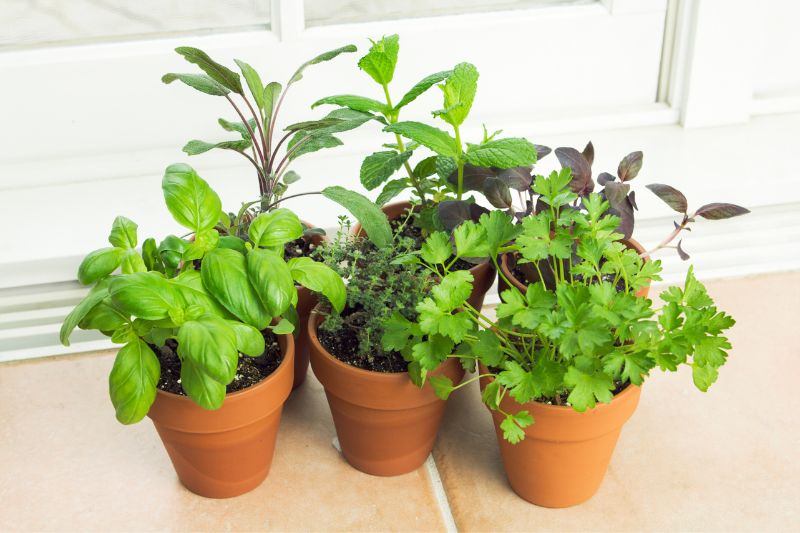
Basil, parsley, chives, and mint are all excellent choices for small indoor gardens, as they require minimal space and can be grown in containers.
b. Dwarf fruit trees
Lemon, lime, and fig trees can be grown in containers and are well-suited for indoor environments. Make sure to choose dwarf or miniatures varieties specifically bred for small spaces.
c. Air-purifying plants
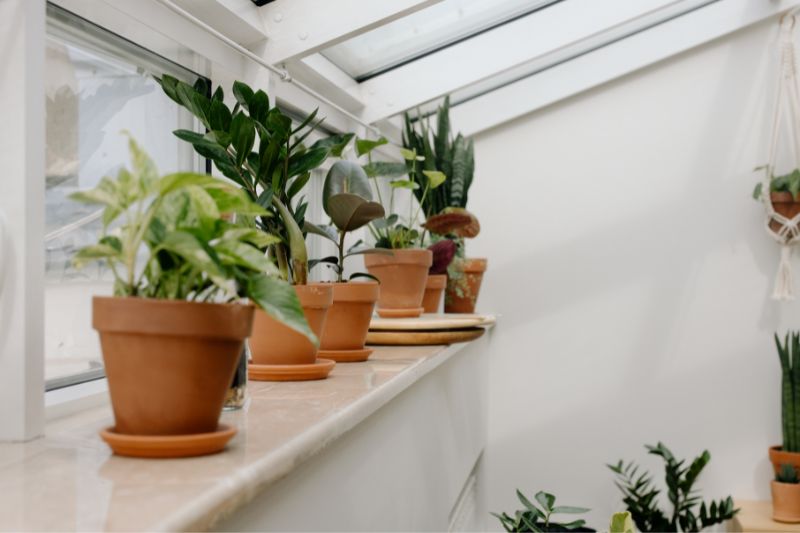
Spider plants, snake plants, and pothos varieties are all low-maintenance, air-purifying plants that thrive in a range of light conditions.
d. Succulents and cacti

These low-maintenance plants require little water and can thrive in small containers, making them perfect for tiny indoor gardens.
E. Air plants
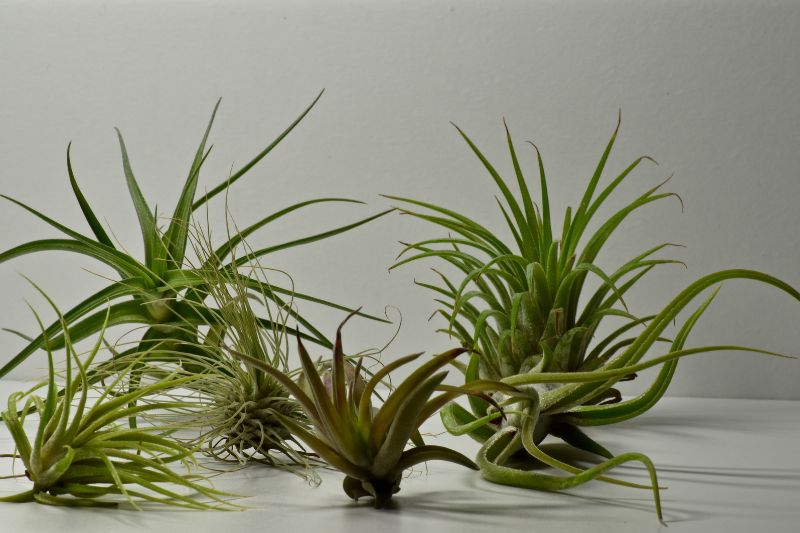
Air plants don’t require soil to grow and can absorb nutrients and moisture from the air, making them perfect for small spaces and even humid environments like bathrooms. Coming in a variety of sizes and shapes, air plants can easily be hung from the ceiling or placed on shelves.
4. Utilize Natural and Artificial Light
Adequate light is essential for plant growth, so it’s important to make the most of available natural light and supplement with artificial light when necessary. Here are some tips:
- Place plants near windows: Ensure your plants receive sufficient sunlight by placing them near windows with southern or western exposure.
- Rotate plants: Periodically rotate your plants to make sure they receive even light exposure and grow symmetrically.
- Use reflective surfaces: Place mirrors or other reflective surfaces near your plants to increase the amount of light they receive.
- Supplement with artificial light: If your space lacks natural light, consider using grow lights specifically designed for indoor plants. These lights mimic the sun’s spectrum and can provide the necessary light for plant growth.
5. Optimize Your Containers and Soil
Choosing the right containers and soil for your indoor garden is essential to its success. Here are some tips:
- Select well-draining containers: Ensure that your plant containers have drainage holes to prevent waterlogged soil, which can lead to root rot. Additionally, choose containers that fit your space and complement your home’s decor.
- Use high-quality potting mix: Select a high-quality, well-draining potting mix that provides the right balance of nutrients, water retention, and aeration for your plants. Avoid using garden soil, as it can become compacted and lead to poor root growth.
- Use self-watering containers: If you’re concerned about over- or under-watering your plants, consider using self-watering containers. These containers have a reservoir at the bottom that provides a consistent water supply to the plants, reducing the risk of water stress.
6. Implement Proper Care and Maintenance
To keep your indoor garden thriving, it’s essential to provide proper care and maintenance. Here are some key tips:
- Watering: Water your plants according to their specific needs, as different plants have different water requirements. Generally, it’s best to water when the top inch of soil feels dry to the touch. Be mindful of overwatering, as this can lead to root rot.
- Fertilizing: Feed your plants with an appropriate fertilizer to ensure they receive the necessary nutrients for healthy growth. Follow the product’s instructions for proper application rates and frequency.
- Pruning and grooming: Regularly prune and groom your plants to encourage healthy growth and prevent disease. Remove dead or damaged leaves and stems, and trim back any leggy or overgrown areas to maintain the desired shape and size.
- Pest control: Keep an eye out for common indoor plant pests, such as aphids, spider mites, and whiteflies. If you notice an infestation, treat the affected plants with insecticidal soap or neem oil.
7. Combine Aesthetics and Functionality
When designing your indoor garden, strive to create a visually appealing space that also serves a practical purpose. Consider incorporating elements such as:
a. Plant stands
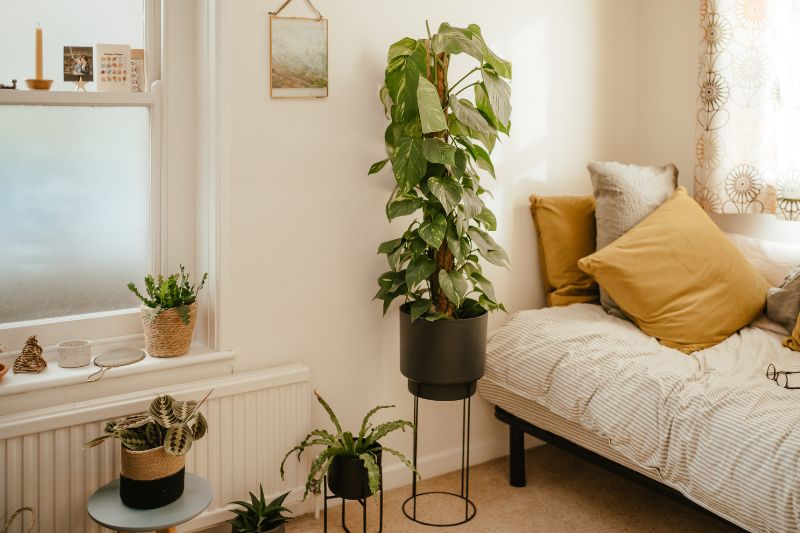
Use plant stands to elevate your plants and create visual interest. This can also help improve air circulation and light distribution.
b. Multipurpose furniture
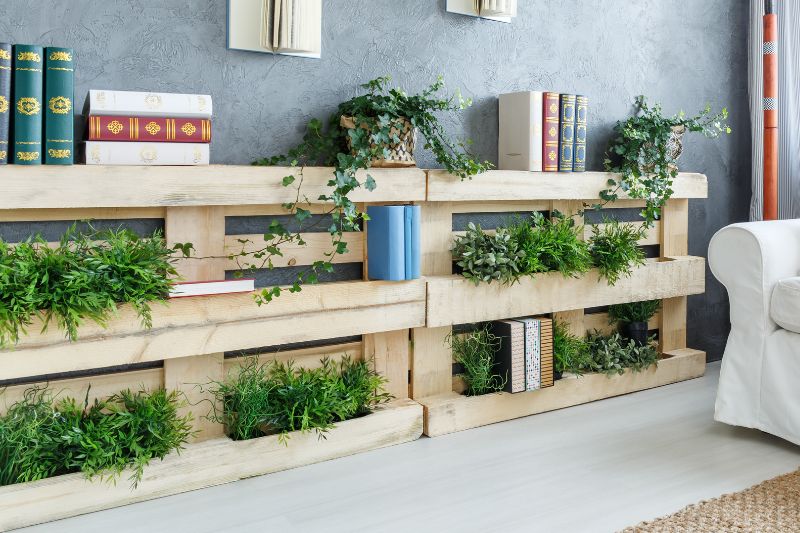
Choose furniture pieces that can double as plant displays, such as bookshelves or side tables with built-in planters.
c. Colorful pots
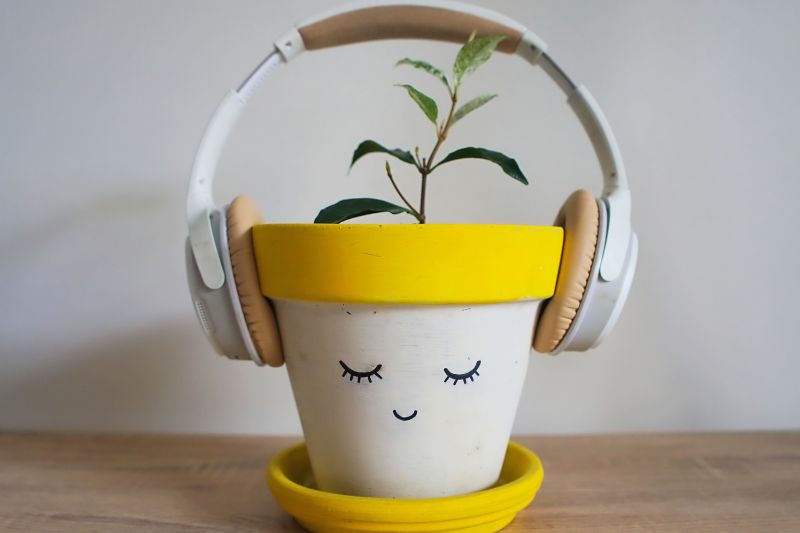
Add a pop of color to your indoor garden by using brightly colored or patterned pots.
d. Group plants with similar needs

Place plants with similar light, water, and humidity requirements together, making it easier to care for them and creating a more cohesive aesthetic.
Conclusion
Creating a thriving indoor garden in small spaces is entirely possible with careful planning, creative use of vertical space, and selecting the right plants for your environment.
By following these tips, you can enjoy the benefits of gardening and improve the ambiance of your home, regardless of its size.


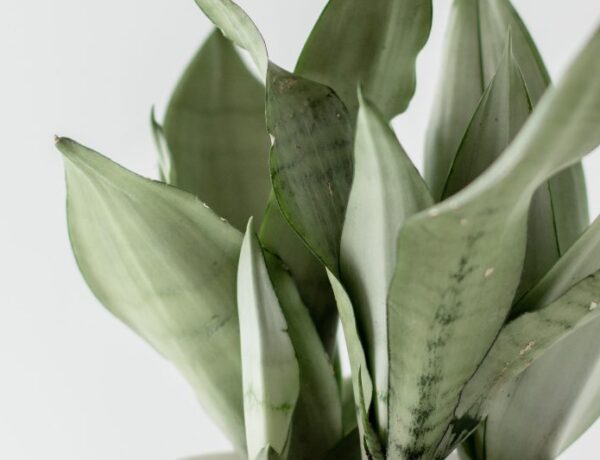
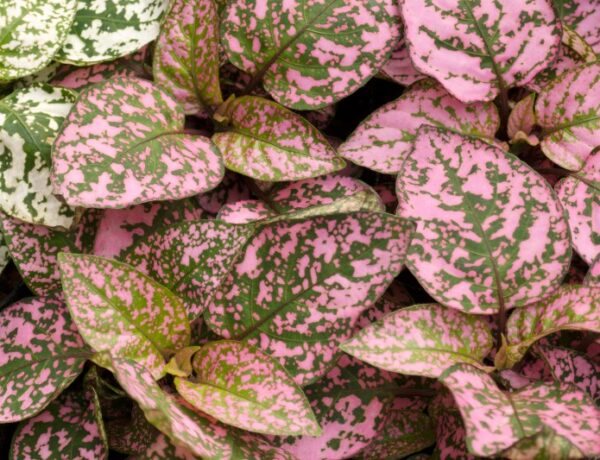


No Comments